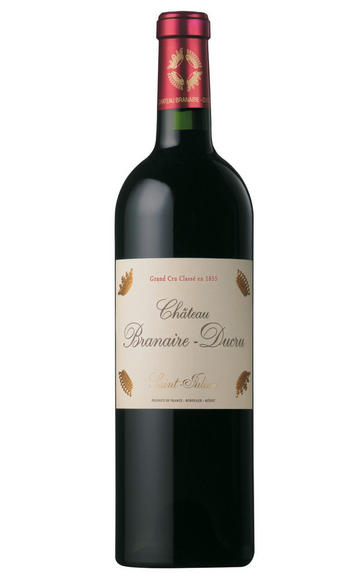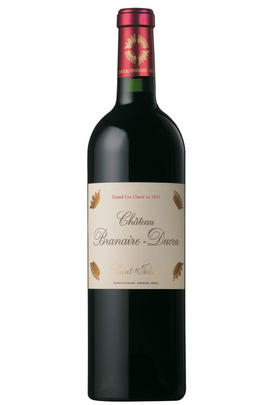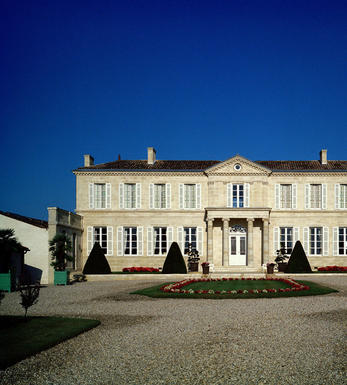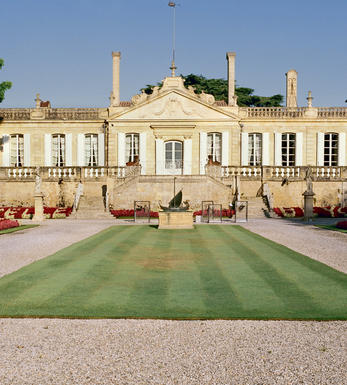
2010 Château Branaire-Ducru, St Julien, Bordeaux

Critics reviews
Robert M. Parker, Jr. - 28/02/2013
Jancis Robinson MW- jancis robinson.com, Apr 2011
James Molesworth – The Wine Spectator – Top Scoring Bordeaux 2010 – 31 Mar 2011
Producer Patrick Maroteaux continues to fine-tune and turn out a succession of brilliant wines from this chateau, which sits across the famous Medoc Route du Vin from Beychevelle.
94 Robert Parker- Wine Advocate- Feb 2013
Proprietor Patrick Maroteaux has completed a decade of brilliant performances at this chateau across the Medoc’s Route de Vin from Beychevelle and a stone’s throw from Ducru Beaucaillou, St.-Pierre and Gloria. A fabulous effort, the 2010's notes of raspberry jam, black currants, crushed rocks and spring flowers are followed by a wine of impeccable purity, medium to full-bodied power, sweet tannin and stunning texture and length. With superb richness and beautiful overall equilibrium, it will benefit from 4-5 years of cellaring and keep for 25 or more years.
93-95 Robert Parker- Wine Advocate- May 2011
About this WINE

Château Branaire-Ducru
Classified as a fourth growth in 1855, Ch. Branaire-Ducru makes pure and classic St Julien. The estate has recently passed from father to son: the widely respected Patrick Maroteaux – who had served at various times as president of the Union des Grands Crus de Bordeaux and the St Julien appellation – sadly passed away in 2017. His son François-Xavier has picked up the baton and continues his father’s legacy. The Maroteaux family bought the property in 1988 and have invested considerably in the vineyard and winery since. Superstar consultant Eric Boissenot advises here, as he does with many of the Left Bank’s top estates, including the Médoc’s four first growths.

St Julien
St Julien is the smallest of the "Big Four" Médoc communes. Although, without any First Growths, St Julien is recognised to be the most consistent of the main communes, with several châteaux turning out impressive wines year after year.
St Julien itself is much more of a village than Pauillac and almost all of the notable properties lie to its south. Its most northerly château is Ch. Léoville Las Cases (whose vineyards actually adjoin those of Latour in Pauillac) but, further south, suitable vineyard land gives way to arable farming and livestock until the Margaux appellation is reached.
The soil is gravelly and finer than that of Pauillac, and without the iron content which gives Pauillac its stature. The homogeneous soils in the vineyards (which extend over a relatively small area of just over 700 hectares) give the commune a unified character.
The wines can be assessed as much by texture as flavour, and there is a sleek, wholesome character to the best. Elegance, harmony and perfect balance and weight, with hints of cassis and cedar, are what epitomise classic St Julien wines. At their very best they combine Margaux’s elegance and refinement with Pauillac’s power and substance.
Ch. Léoville Las Cases produces arguably the most sought-after St Julien, and in any reassessment of the 1855 Classification it would almost certainly warrant being elevated to First Growth status.
Recommended Châteaux: Ch. Léoville Las Cases, Ch.Léoville Barton, Ch Léoville Poyferré, Ch. Ducru-Beaucaillou, Ch Langoa Barton, Ch Gruaud Larose, Ch. Branaire-Ducru, Ch. Beychevelle

Cabernet Sauvignon Blend
Cabernet Sauvignon lends itself particularly well in blends with Merlot. This is actually the archetypal Bordeaux blend, though in different proportions in the sub-regions and sometimes topped up with Cabernet Franc, Malbec, and Petit Verdot.
In the Médoc and Graves the percentage of Cabernet Sauvignon in the blend can range from 95% (Mouton-Rothschild) to as low as 40%. It is particularly suited to the dry, warm, free- draining, gravel-rich soils and is responsible for the redolent cassis characteristics as well as the depth of colour, tannic structure and pronounced acidity of Médoc wines. However 100% Cabernet Sauvignon wines can be slightly hollow-tasting in the middle palate and Merlot with its generous, fleshy fruit flavours acts as a perfect foil by filling in this cavity.
In St-Emilion and Pomerol, the blends are Merlot dominated as Cabernet Sauvignon can struggle to ripen there - when it is included, it adds structure and body to the wine. Sassicaia is the most famous Bordeaux blend in Italy and has spawned many imitations, whereby the blend is now firmly established in the New World and particularly in California and Australia.


Buying options
Add to wishlist
Description
This wine is more backward than I would have normally expected, but nevertheless, it is very impressive. The 2010 Branaire-Ducru displays an inky bluish purple color and loads of mulberry, raspberry, black currant, graphite and floral notes in its intense aromatics. Medium to full-bodied , with sensational ripeness, purity, texture and length, the tannins are slightly more prominent than I remember from barrel, but they are sweet and ripe (as opposed to astringent and bitter). This beautiful wine needs 4-6 years of cellaring and should keep 25-30 years.
Robert M. Parker, Jr. - 28/02/2013
wine at a glance
Delivery and quality guarantee